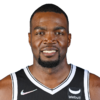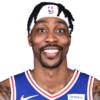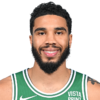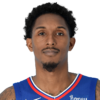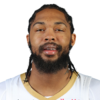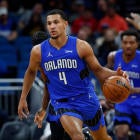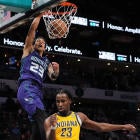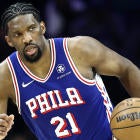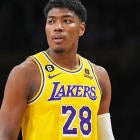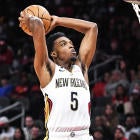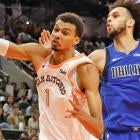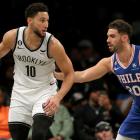After an exciting summer that saw LeBron James, Kawhi Leonard, DeMarcus Cousins and DeMar DeRozan, among others, change teams, the NBA season is now rapidly approaching. Along with it comes the start of another year of Fantasy Basketball.
During draft season, everyone is looking for the underappreciated players available late in drafts who could yield significant dividends. But another area that's just as important to focus on is which players to avoid.
While you can't predict injuries, you can try to mitigate some of the risk on your roster by avoiding potential busts who may be overvalued. In the context of Fantasy Basketball, "bust" doesn't necessarily mean what it does in Fantasy Football or Fantasy Baseball. Barring injury, NBA players -- especially stars -- rarely experience significant statistical declines during their peak seasons. So when it comes to defining busts, the work has to be done in the margins. The players listed below aren't projected to fall off a cliff, numbers-wise, this season. Rather, they're simply at risk of their production failing to live up to past expectations.
Whether due to age, surrounding talent, or a disadvantageous change of scenery, it might be wise to consider passing on the players below as your draft unfolds.
The Bulls decided to blow up their roster before last season, trading away All-Star Jimmy Butler to the Timberwolves in a deal that netted them Zach LaVine, Kris Dunn and a first-round pick, which they used on Markkanen. While Markkanen looked ticketed for a bench role heading into the year, he became the starting power forward after a bizarre, preseason fight between Bobby Portis and Nikola Mirotic left Portis suspended and Mirotic injured.
Markkanen never let go of the job, although he was limited to 68 games due to injury. He finished the year averaging 15.2 points, 7.5 rebounds and 2.1 three-pointers per game. He was also excellent from the charity stripe, shooting 84.3 percent. His 22.1 percent usage rate was also third-highest on the team among players who appeared in at least 40 games, behind only Portis (25.7 percent) and Dunn (24.7 percent).
It's clear that Markkanen is a huge part of the Bulls' future, but the problem -- from a Fantasy perspective -- for this season is the improved group of players around him. LaVine is healthy after playing only 24 games last year while he recovered from a torn ACL. Chicago also added Jabari Parker, who has a 23 percent usage rate for his career and overlaps, positionally, with Markkanen.
It's important to note that while Markkanen averaged plenty of three-pointers made, he shot only 36.2 percent from behind the arc. That helped drag down his overall field goal percentage to 43.4 percent -- rather low for a big man. Add in the fact that Markkanen doesn't provide much in the way of assists, steals and blocks, and his short-term Fantasy upside is fairly limited.
Millsap's first season with the Nuggets was a disaster. A wrist injury limited him to 38 games, marking the first time in his career that he played fewer than 64 games in a season. He only averaged 30 minutes per contest when he was able to play, which was his lowest average since the 2012-13 season when he was still with the Jazz.
Prior to signing with the Nuggets last summer, Millsap was one of the centerpieces of the Hawks, averaging at least 16.7 points and 7.7 rebounds in each of the four seasons in Atlanta. While he did have some quality players around him, he's surrounded by even better talent in Denver, including Nikola Jokic, Gary Harris, and Jamal Murray.
Some of Millsap's reduced numbers last year can be attributed to his return from injury, but his 22 percent usage rate was also his lowest mark since the 2009-10 season. With Nikola Jokic, Jamal Murray and Gary Harris each improving, it wouldn't be surprising if Millsap is again often relegated to being the third option, offensively.
It should also be noted that Millsap is shooting just 33 percent from behind the arc and 73.4 percent from the charity stripe for his career. Jokic is also a vastly superior passer, which may not leave many opportunities for Millsap to rack up assists. Millsap can still provide above-average Fantasy value, but don't draft him too early with the expectation that he will replicate the kind of numbers he put up with the Hawks.
Howard had success when Steve Clifford was on the coaching staff during his days with the Magic and Lakers, so it wasn't all that surprising that Howard had a bit of a renaissance in Charlotte last season. Howard was given an increased role offensively, finishing with a 24.2 percent usage rate that was his highest since his final season with the Magic.
Howard averaged 16.6 points, 12.5 rebounds and 1.6 blocks per game but saw his field goal percentage drop to 55.5 percent, his lowest in more than a decade. He did make some minor improvements at the charity stripe, but he was still a drag in that department at 57.4 percent.
The Hornets decided to move on from Howard over the summer and he ultimately landed with the Wizards. Outside of Kemba Walker, there weren't many talented offensive players around Howard on the Hornets. That won't be the case with the Wizards, who have both John Wall and Bradley Beal in the backcourt, with Otto Porter, Kelly Oubre and Markieff Morris up front. The Wizards badly needed a starting center after trading away Marcin Gortat, but Howard is still likely to see a decrease in his usage rate, relative to last season. Howard can still provide near-elite-level rebounds and blocks production, but don't draft him with the expectation that he will match his offensive output from last year.
The Celtics appear to have hit a grand slam with Tatum. The No. 3 overall pick was forced into a significant role as a rookie due to the injuries to Gordon Hayward and Kyrie Irving, resulting in him averaging almost 31 minutes per contest. He showed plenty of promise, averaging 13.9 points, five rebounds and 1.3 three-pointers per game.
Tatum didn't provide many assists, but he helped his value by shooting 47.5 percent from the field, 82.6 percent from the free-throw line and a scorching 43.4 percent from 3.
The thing with Tatum is that he might be one of those players who is more valuable in real life basketball than he is in Fantasy. He doesn't really excel in any one particular area, and the Celtics' roster is loaded with Irving and Hayward back healthy and third-year wing Jaylen Brown also looking like a future star. Tatum's assists also figure to be limited with a far superior passer in Al Horford playing alongside him in the frontcourt. His future is undoubtedly bright, but the time might not be right to invest in him just yet.
The Clippers were decimated by injuries last season, which left Williams to average 33 minutes per game. It was first time Williams, who's spent much of his career as a full-time sixth man, averaged more than 30 minutes per contest in his career.
Not only did he log plenty of minutes, but the Clippers leaned on him heavily to provide offense, resulting in his 29.8 percent usage rate. The led to some lofty production, with Williams averaging 22.6 points and 2.4 three-pointers per contest while adding more than five assists per game (5.3 APG) for the first time in his career.
There is no question that Williams is instant offense, but it's highly unlikely that he will have such a significant role again this season. The Clippers had unusually bad injury luck last season, and they beefed up their guard rotation, adding a pair of lottery rookies -- Shai Gilgeous-Alexander and Jerome Robinson -- to a veteran core of Williams, Patrick Beverley, Avery Bradley, and Milos Teodosic. While Williams is clearly the class of that list, as long as the Clippers stay even relatively healthy, his workload will likely sink back closer to where it's been in recent seasons, and his production should follow suit.
Ingram showed significant improvement during his second year in the league, though he missed 23 games due to injury, which hampered his season-long Fantasy value. He averaged 16.1 points per game on a much-improved 47 percent shooting, but he still wasn't a major threat from behind the arc (0.7 3PM/game), despite shooting 39 percent from downtown.
Ingram also showed an ability to provide value in other areas. He averaged a respectable 5.3 rebounds per contest and opened some eyes by averaging 3.9 assists, oftentimes moonlighting at point guard amid injuries to Lonzo Ball.
While last season was certainly a step in the right direction, the Lakers have a completely different squad this year after adding LeBron James, Rajon Rondo, Michael Beasley and Lance Stephenson. With James running the show, Ingram will likely sink back to a secondary role. And while that doesn't mean he won't be a productive scorer and rebounder, his assists numbers are likely to regress. Even if Ball, who is still working back from offseason knee surgery, misses time again, with Rondo, James, and even Lance Stephenson, in place, Ingram's opportunities to work as the primary ball-handler may be few and far between.








